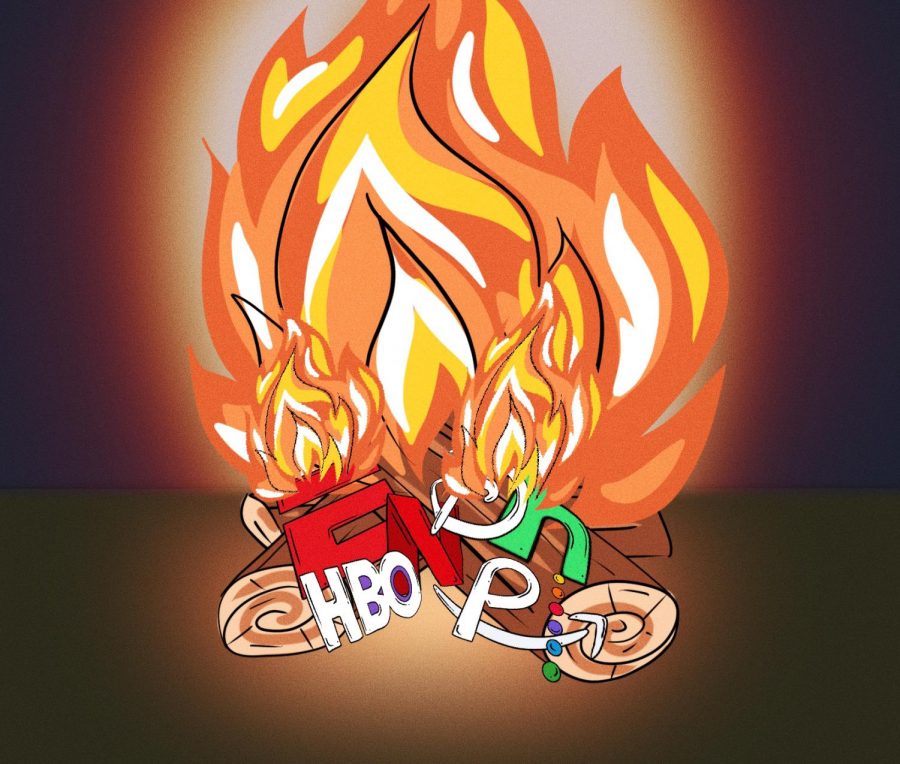Streaming services prove dreadfully disappointing
Modern streaming industry becoming little more than revamped cable TV
The full 360-degree transformation of services like Netflix reflects one of the core values of capitalism: “If it is still making money, do not change it!”
September 9, 2021
Streaming services have come a long way since Netflix was mailing out rental DVDs in the early 2000s.
Nowadays, we have thousands of titles available across countless platforms, all online. Many services are even producing exclusive original content, like Netflix originals “Stranger Things” and “The Crown,” and the endless stream of new Marvel media on Disney+.
Had they been developed properly by prioritizing users, today’s streaming services could have been the epitome of media sharing.
But like so many other industries, streaming services fell victim to the wholly capitalist tragedy of overpriced banality. No imagination, no originality — just remodeling things that were once profitable in order to cater to a new generation, then marketing them as “innovative.”
With users having to pay for multiple streaming services each month to access a few select popular shows, streaming services have reverted to something that is no better than cable.
This proves to be especially problematic for students, who constitute a huge portion of streaming viewership. With so many expenses in their lives, students simply cannot afford to be paying for so many streaming services all on their own.
As more and more new streaming services pop up, media become more and more dispersed, leading to certain platforms offering just a few things viewers might be interested in and forcing costs to rise even higher for consumers.
Kaylee Wolfington, junior English and history double major, said such circumstances drive her away from certain platforms entirely.
“I have, like, four streaming services … but I wish I had more, because there’s some shows that I want to watch that I’m not able to,” Wolfington said. “It’s like, you don’t necessarily want to pay for an extra streaming service just because you want to watch one or two shows on that streaming service.”
The average American is paying for about four streaming services each month, according to a survey by data analytics company J.D. Power. But based on accounts from people like Wolfington, they are probably still being limited in terms of what they want to watch versus what they are able to watch.
Having to pay for so many different platforms is often not accessible. Many people, like Bailey Gauthier, sophomore English education major, have had to give up shows they loved because they were moved to new streaming services they did not want to pay for.
Some TV watchers may not be as honorable as Gauthier. Unable to give up their shows, it is conceivable for many viewers to revert to media piracy.
Piracy was thought to be a problem of the past as cable faded into obscurity. But as streaming becomes more and more like cable, piracy rates are once again on the rise. Pirated video material now gets over 230 billion views annually, according to cybersecurity advocate and education site DataProt.
Not everything about the streaming industry is negative, however. As many platforms produce their own original content, many shows, films and documentaries are being made that are bolder and more inclusive than media that has been produced by major companies and networks in the past.
“With more significant streaming platforms like Netflix producing things, they have more say in diversity when it comes to, like, producers, writers and people that are coordinating screenplays,” Gauthier said.
However, the lack of involvement of major industry names has also led to some content that is seriously lacking in quality, said both Gauthier and Wolfington.
“Sometimes there’s really good shows that come out of it, and sometimes there’s shows that lack certain editing, or certain actors; that is just not great TV,” Wolfington said.
The production of original content is also likely to increase piracy risks even more, especially since some of these exclusive shows like HBO’s “Game of Thrones” or Hulu’s “The Handmaid’s Tale” have gained extremely widespread popularity.
All in all, the streaming service industry as it stands has become a grim reflection of our modern want-it-now culture.
“Constant access to a bunch of different products and forms of entertainment definitely fits the time, but I have no clue what it’s going to turn into, especially as more and more platforms seem to be popping up,” Gauthier said. “It feels very weird, like we’re in this pivotal moment with streaming platforms.”
While it is indeed impossible to predict the future, we can look to the current patterns in the industry for some pretty clear clues as to what is coming next.
As every media company from Disney to NBC fights to develop the next new, hot streaming platform with the best original content, we have wound up with an industry that is practically identical to cable, which streaming services once fought to replace.
The only difference is that we are paying for numerous individual services every month to watch just a few things, instead of paying for a bundle of channels every month to only watch a handful of them.
The streaming industry has the same complaints from viewers that cable did in terms of convenience and availability and has done little to nothing to combat issues like piracy.
The similarities only grow with the emerging trend streaming services have started in which they release weekly new episodes of shows, complete with commercial breaks.
The practically perfect 360-degree turnaround from cable and the mirror image of our capitalist society reflected in the streaming industry might be poetic — if it were not so dang expensive.










